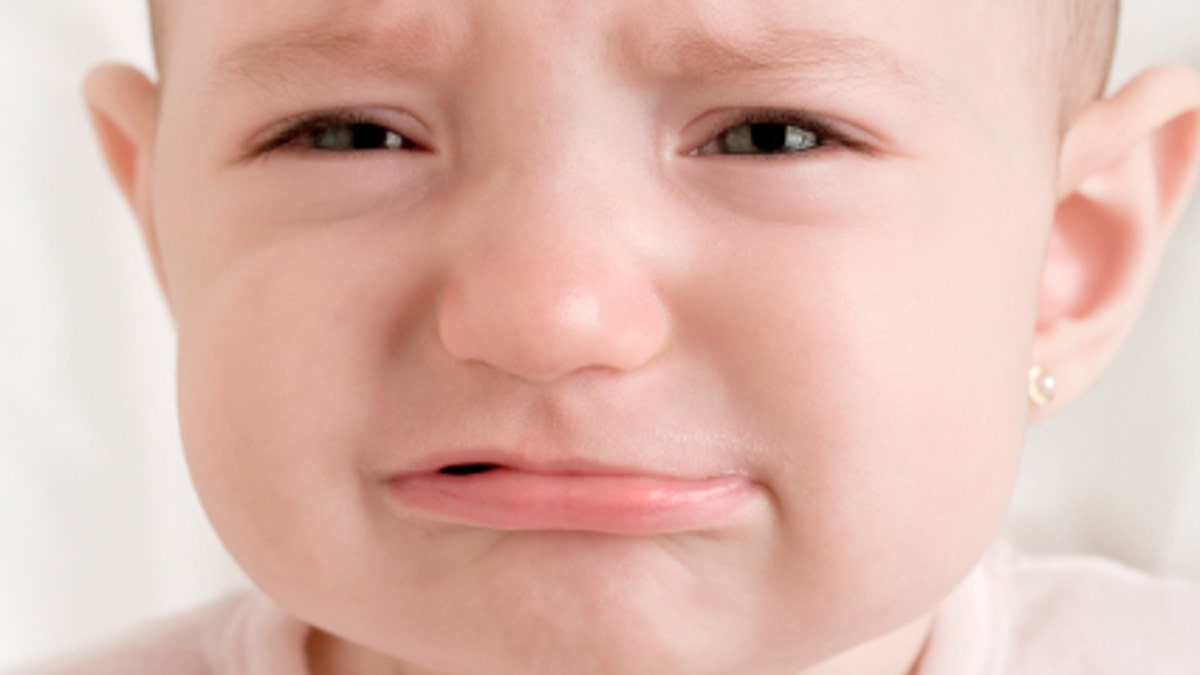
Frequent, unexplained crying in infants, known as colic, may be an early sign of migraine headaches, a new study suggests.
The results show that women with a history of migraine headaches were 2.6 times more likely than those without migraines to have babies with colic.
The findings suggest "migraine genes," or genetic factors that predispose people to migraine headaches, may manifest themselves in early life as colic, said study researcher Dr. Amy Gelfand, a child neurologist at the University of California, San Francisco School of Medicine.
Even if that idea proved to be true, however, researchers would not be able to tell if the incessant crying of colicky babies was due to headache pain or some other type of discomfort.
Just as adults can become more sensitive to light and noise during a migraine, colicky babies may be extra-sensitive to similar stimulation, Gelfand said.
"I think that the babies are having a similar experience: where a non-colicky baby is just experiencing light and sound, and a colicky baby is experiencing too much light and too much sound," Gelfand said.
The findings, presented here this week at the American Academy of Neurology annual meeting, may help researchers figure out effective ways to treat colic.
Colic and migraines
Colic is most prevalent in infants ages 6 to 8 weeks. About one in five babies is colicky at some point, according to the National Institutes of Health. A baby is considered colicky if it cries at least three days a week for at least three hours a day, and the crying is not due to a medical problem.
The cause of colic is not known, although some think it is due to abdominal pain caused by gas. Gelfand noted that babies do not cry less when treated with medication for gas, and that the crying tends to occur toward the end of the day, which is not necessarily related to feeding times.
Two earlier studies found that children with migraines were more likely to have been colicky babies than were children who did not experience migraines.
In the new study, Gelfand and colleagues surveyed 154 new mothers during a doctor's visit when their children were 2 months old. The women were asked whether a physician had diagnosed them with migraines. They also filled out a questionnaire designed to screen people for a history of migraine headaches.
Fathers were also surveyed if they were present.
Eighteen percent of mothers reported migraines, and 14 percent had babies with colic.
About 29 percent of mothers with migraines had colicky babies, compared with 11 percent of mothers who didn't have migraines.
Treating colic
While no link was found between the fathers' migraines and the babies' colic, Gelfand said it's likely this was because the study did not include enough fathers.
If overstimulation is responsible for some cases of colic, it's possible reducing stimulation — by turning down loud music, avoiding rattle toys and dimming bright lights — would help stop colic, Gelfand said, and she said future studies should look into this.
Families with a history of migraine could also be counseled on how to prepare for a colicky baby, Gelfand said.
However, at this point, the findings show only an association and not a cause-effect link. Colicky babies need to be followed forward in time to see if they are more prone to later having migraine headaches, Gelfand said.
Pass it on: Infant colic may be an early manifestation of migraine headaches.
Copyright 2012 MyHealthNewsDaily, a TechMediaNetwork company. All rights reserved. This material may not be published, broadcast, rewritten or redistributed.
